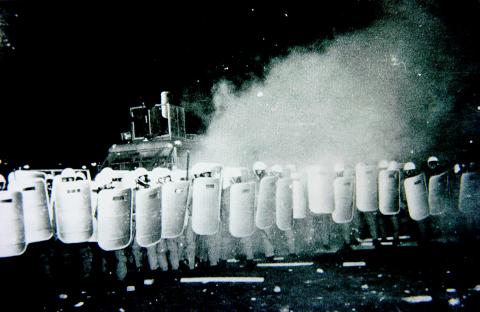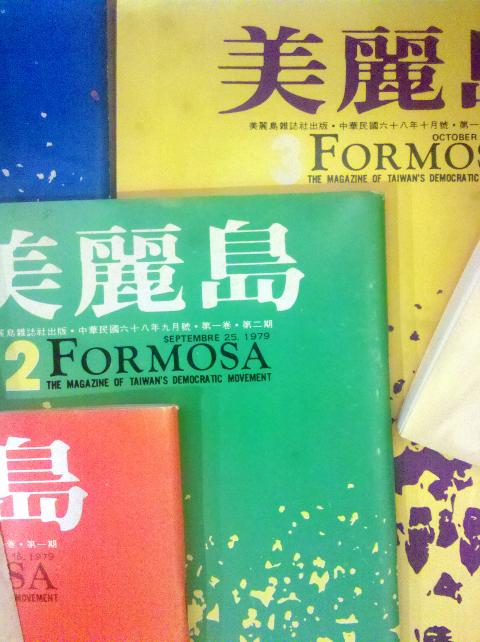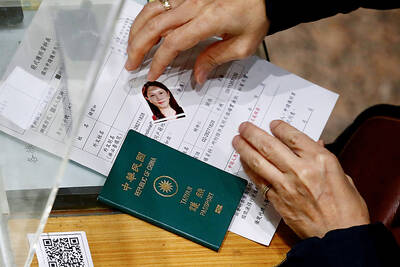Taiwan in Time: Dec. 7 to Dec. 13
The night of Dec. 12, 1979 was a restless one for the staff of Formosa Magazine (美麗島雜誌), as they gathered in a building in Taipei where several of them lived.

Photo: Chu Pei-hsiung, Taipei Times
Almost all of them would go on to become major Democratic Progressive Party (DPP) political players in the future, but for now, they were wanted criminals.
Two days previously, on Human Rights Day, the magazine, published by dangwai (黨外, “outside the party”) politicians opposing the Chinese Nationalist Party’s (KMT) one-party rule, organized a pro-democracy rally in Kaohsiung. The KMT sent troops and police to surround and intimidate the protesters, and things soon turned violent. Official injury numbers initially showed 183 officers and no civilians, the latter figure later increased to 50.
Accounts of what actually happened changed over time, with perceptions today being more sympathetic to the dangwai than what was indicated in the KMT-controlled media.

Courtesy of Wikimedia Commons
Today’s popular version of events is that the police repeatedly closed in on the protesters and used tear gas, which caused them to retaliate despite calls for calm by protest leaders. This came to be known as the Kaohsiung Incident, also called the Formosa Incident.
The next day, the National Security Bureau and Taiwan Garrison Command announced that they would arrest those who were responsible for the incident — namely the dangwai politicians.
In an oral history of the incident published by Academia Sinica, former vice president and Formosa Magazine editor Annette Lu (呂秀蓮) says for safety concerns she and current Kaohsiung mayor Chen Chu (陳菊) were staying with fellow magazine staff Lin Yi-hsiung (林義雄), Shih Ming-te (施明德) and Linda Gail Arrigo.
Lu says she fell asleep while Arrigo kept contact with the outside through telephone. When the phone line was cut, Arrigo knew something was wrong and barricaded the doors with furniture.
Lu remembers Chen jumping off the second floor balcony, distracting the officer pursuing Shih, who eventually got away. The rest of them were arrested. Arrigo was deported, while the others, along with four other opposition leaders were accused of sedition, tried by a military court and sentenced to terms ranging from 12 years to life imprisonment.
THEN AND NOW
Today, the incident is regarded as a crucial moment in Taiwan’s democratization. Though it would be another eight years until opposition parties were officially allowed, this event is often considered a sign of the KMT’s weakening grip on sole power of the country.
But back then, most media outlets portrayed the rally organizers as riot inciters who had planned the violence and were serious threats to a stable, “democratic” society.
Consider this passage from the 1980 book The Complete Story of the Formosa Incident (美麗島事件始末): “This is a very satirical tragedy in the history of Taiwanese democracy, as the violence was perpetrated by people who have been calling loudly for democracy.”
Almost each newspaper printed letters from “patriotic” readers denouncing the dangwai’s actions, as well as interviews with local officials, wounded officers, celebrities and so on. Most accounts also state that the officers didn’t fight back when attacked and praised their noble actions.
One article features an officer who lost several teeth in the incident. He reportedly refused the consolation money offered by the government.
Unable to speak, he wrote on a piece of paper, “What’s the use of giving me money? I just want our country to survive … I hope the government will stop tolerating these inhumane conspirators.”
Nothing could be more symbolic than the sailor who stood in the face of the protesters with his hands held high, tears on his face, singing loudly the patriotic song Plum Blossom (梅花), even continuing when he was attacked.
“I am Chinese, I love my country,” he reportedly yelled.
Of course, each side has their own story to tell, but the various commentaries calling the incident an attack on a “free and democratic” country is deeply ironic, as martial law was still in effect, and it was in fact the lack of democracy that led to the founding of the magazine.
Although opposition parties were still banned, the KMT appeared to become more lenient as it allowed dangwai politicians to run for the National Assembly in 1969. They were gearing up for the 1978 legislative elections when the US severed relations with Taiwan. In response, the KMT suspended all electoral activities and announced that emergency measures would be taken against those who gathered illegally or held demonstrations.
Their only means of entering politics cut off, the dangwai turned to political activism. Formosa was formed as the voice of the dangwai, and celebrated its first issue with a banquet at the Mandarina Crown Hotel while it was surrounded by taunting protesters led by members of a pro-KMT magazine. It was a rocky start, and it took a long time before things got easier.
Taiwan in Time, a column about Taiwan’s history that is published every Sunday, spotlights important or interesting events around the nation that have anniversaries this week.

April 14 to April 20 In March 1947, Sising Katadrepan urged the government to drop the “high mountain people” (高山族) designation for Indigenous Taiwanese and refer to them as “Taiwan people” (台灣族). He considered the term derogatory, arguing that it made them sound like animals. The Taiwan Provincial Government agreed to stop using the term, stating that Indigenous Taiwanese suffered all sorts of discrimination and oppression under the Japanese and were forced to live in the mountains as outsiders to society. Now, under the new regime, they would be seen as equals, thus they should be henceforth

With over 100 works on display, this is Louise Bourgeois’ first solo show in Taiwan. Visitors are invited to traverse her world of love and hate, vengeance and acceptance, trauma and reconciliation. Dominating the entrance, the nine-foot-tall Crouching Spider (2003) greets visitors. The creature looms behind the glass facade, symbolic protector and gatekeeper to the intimate journey ahead. Bourgeois, best known for her giant spider sculptures, is one of the most influential artist of the twentieth century. Blending vulnerability and defiance through themes of sexuality, trauma and identity, her work reshaped the landscape of contemporary art with fearless honesty. “People are influenced by

Last week, the the National Immigration Agency (NIA) told the legislature that more than 10,000 naturalized Taiwanese citizens from the People’s Republic of China (PRC) risked having their citizenship revoked if they failed to provide proof that they had renounced their Chinese household registration within the next three months. Renunciation is required under the Act Governing Relations Between the People of the Taiwan Area and the Mainland Area (臺灣地區與大陸地區人民關係條例), as amended in 2004, though it was only a legal requirement after 2000. Prior to that, it had been only an administrative requirement since the Nationality Act (國籍法) was established in

The remains of this Japanese-era trail designed to protect the camphor industry make for a scenic day-hike, a fascinating overnight hike or a challenging multi-day adventure Maolin District (茂林) in Kaohsiung is well known for beautiful roadside scenery, waterfalls, the annual butterfly migration and indigenous culture. A lesser known but worthwhile destination here lies along the very top of the valley: the Liugui Security Path (六龜警備道). This relic of the Japanese era once isolated the Maolin valley from the outside world but now serves to draw tourists in. The path originally ran for about 50km, but not all of this trail is still easily walkable. The nicest section for a simple day hike is the heavily trafficked southern section above Maolin and Wanshan (萬山) villages. Remains of